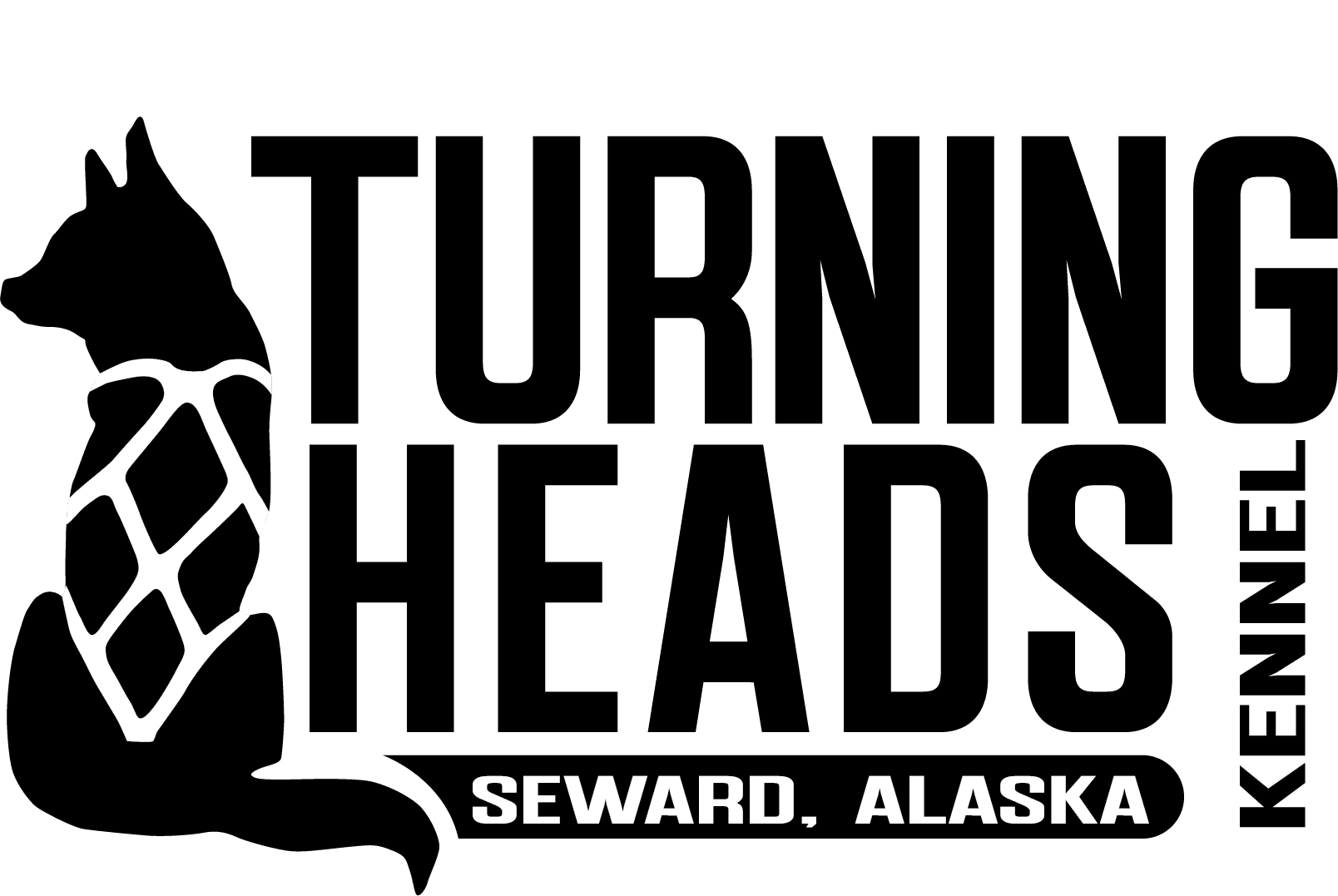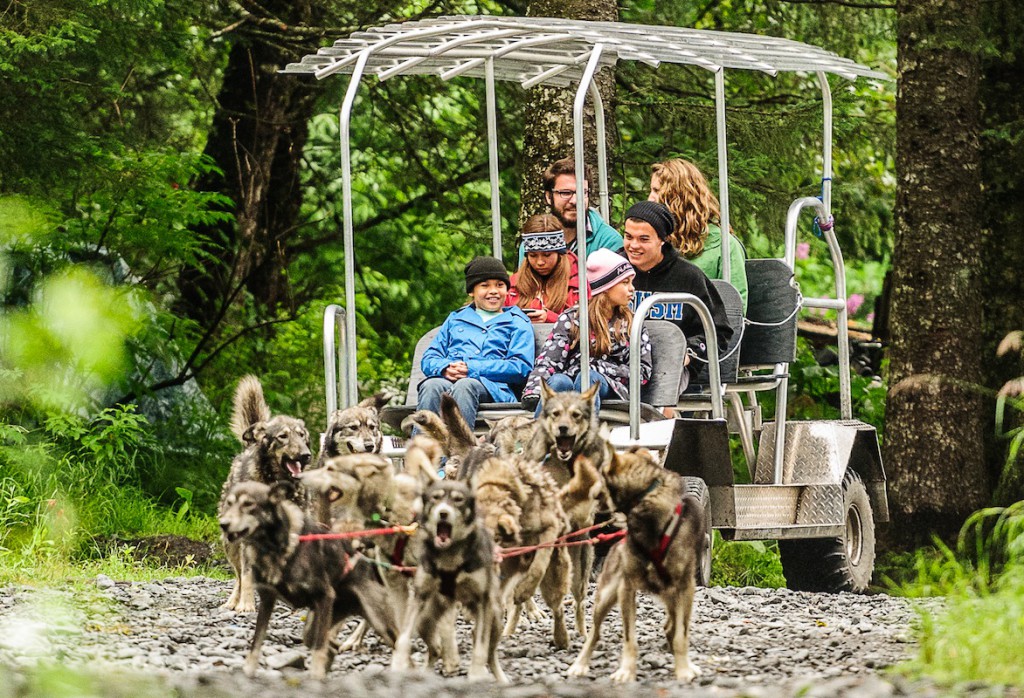Racing season may be over but it doesn’t mean we stop training. For an athlete, the journey to better yourself and your team is never ending. How can we improve? What can we build upon? What do we need to do to continue our success? These are the questions that pour into our conversation at morning coffee.
Most importantly, what can we be doing right now to help us later on in the season?
Even though the snow has melted, our dogs still need to exercise. Exercise is a crucial part of any healthy lifestyle. When your job is to compete in 1,000 mile races staying in shape is a critical job requirement. Although the length of our sled dog runs may shorten due to the warming temperatures, it is important that our dogs still have an outlet for their endless energy. Running is required!
Lots Of Visitors Means Lots of Opportunity for Dog Sled Tours
During the summer, Alaska comes to life as visitors from all over the world flock to see our state’s majestic scenery and experience our unique Alaskan culture. Dogsledding is such a unique part of Alaskan culture that people can’t help but be interested. Before we started doing dog sled tours, curious visitors would pull in to our driveway at all hours of the day.
We’d happily great them, thinking they were lost, but they weren’t lost.
“Can we check out your sled dogs?” People would stop in asking, again and again.
Eventually our need to run our dogs, our passion for sharing our sport, and the curiosity of people passing by our kennel made doing dog sled tours an easy choice for us.
On a daily basis, we get to share our passion.
“I had no idea how much they loved to run!”
“I am amazed at how smart your dogs are.”
“They are so excited.”
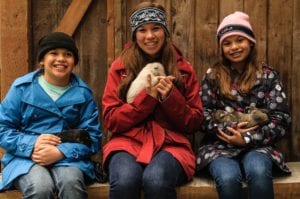
We get so much positive feedback from people who are curious because dogsledding is something so foreign to them. By the end of our tour, many of our guests are hooked and continue to follow us along throughout the racing season – some of you may even be reading this blog post!
Time and again people are amazed at how much our dogs love their job. To a sled dog running isn’t work — it is a way of life. For a musher, running dogs isn’t work either. It’s a way to decompress and get away from the hectic chaos that defines most modern lives. When we are out on the trail, we must be one hundred percent focus on our dogs.
Our tours have now evolved into a crucial part of our training program. Just as collegiate and professional athletes train during the “off season” so do our sled dogs. When you go on one of our dog sled tours, you are not simply going for a dog sled ride. Our tour is about experiencing training in action. It’s about sharing not only what we love but about educating people on how sled dogs our trained.
The summer dog sled ride we give at our kennel incorporates two crucial components to help us maintain a competitive edge throughout the racing season. First, instead of simply running our dogs we are actually putting them through a strength training program. Second, we use each tour as an opportunity to work on training a new lead dog.
Dog Sled Tours As Strength Training
Running dogs in the warm summer months is inherently different than running in the winter. Careful considerations have to be made about how to best run the dogs and how to accommodate them to the warmer temperatures that summer brings. We are particularly lucky because our kennel is situated in a glacier valley and we often have cold wind that blows down off the Harding Icefield that helps keep our dogs cool. Additionally, we take precautions by resting our dogs frequently and giving them plenty of access to fresh water before, after, and even during our tours.
Because of the warm conditions, we generally run the dogs between 1 and 2 miles. We are fortunate that our trail system allows us to customize the length of our runs based on the weather so we can adjust how far we run them based on what is best for the dogs. On warm days, we run shorter than on cool rainy days.
We use an aluminum cart that weighs about 800 lbs without passengers and can seat 8 for our summer time mushing. Unlike some of the bigger dog sledding operations, we generally have between 4 and 8 guests per tour. This roughly equates to an additional weight of 600 to 1200 pounds that the dogs are pulling. So on average when we go out with our team they are pulling anywhere from 1200 to 2400 pounds.
We use this information to build a great strength work out for our dogs. At the start of the summer our dogs have generally had close to a month and a half of very light easy runs. They are no longer on the aggressive training schedule required for racing because that is over so we carefully work them into their new routine.
When the summer season begins, we generally hook up 14 to 16 dogs based on the size of the tour and rotate our dogs out after every run. That means the dogs run once and, if we have another tour, a completely different team is then hooked up. As the summer progresses however, we begin making changes so that the work outs continue to challenge our dogs.
Generally speaking, the weather in Seward caters to us strengthening our team. We generally see more temperate weather in the early part of the summer and we see more rain in the latter half. The latter part of July and August can bring wet, cool, and damp weather – which allows us to run our dogs longer and harder. As we enter the cooler and rainier stretch of summer, we take advantage of it.
During the middle of the summer, our will adjust to pulling heavy loads. We can’t up the weight but we can increase the number of reps our dogs do so when the weather is sufficiently cool we may “camp” our dogs in between tours. Camping refers to the practice of leaving the dogs hooked up but resting on the line so that they are ready to run again. This is commonly done in checkpoints and during races.
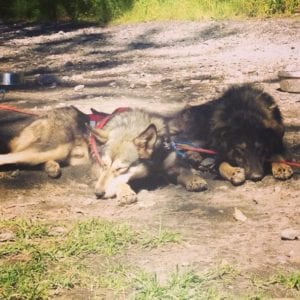
Camping the dogs allows us to spend less time hooking dogs up and more time interacting with our guests. It also starts teaching our dogs the basics of racing: first you run, then you rest, then you run some more.
Finally, towards the end of the season we may even start to use fewer dogs. The number of tours we do each day significantly decreases towards the end of August and at this point our dogs are officially body builders so instead of hooking up 14 dogs we may only hook up 10 or 12, depending on the number of guests we have.
This great strength training program helps our dogs stay in shape throughout the summer and ensures that every dog is ready to begin working on building their endurance come the fall.
Lead Dog Training Is The Best Part Of Our Dog Sled Tour
The tours we do in the summer don’t just serve as weight training. They are a vital component to our lead dog training program. This year, we realized how special our kennel is because of the number of high quality leaders we have. This is a direct result of the emphasis we place on making our tours a training exercise for our guests to be a part of rather than simply a ride.
It is very easy to hook up well-trained leaders to make your runs go smoothly. It’s much more difficult to take dogs who have never run lead and work with them up front while communicating with guests. That, however, is what we have chosen to do. We don’t stick with our go-to race leaders, instead we focus on building new leaders. This gives our kennel tremendous depth.
The first step involves identifying potential leaders. This is generally easy as we already know the dogs. Each spring we identify about a dozen dogs in our kennel that we think could possibly run lead. Then, we make a goal of trying to get those dogs in lead as much as possible. We challenge ourselves, we challenge our dogs, and we keep our guests thoroughly entertained because seeing a lead dog develop is truly exciting.
Every other dog sled tour we have ever seen in the summer time has a set course that they operate on. The dogs (and even sometimes the musher) eventually go into “autopilot.” The dogs aren’t taking commands, they are simply going through the motions. This is not good training and, in our mind, is actually un-training the dogs.
So we don’t have a set course.
We have a system of trails and each time we go out for a tour we never know exactly where we will go. Sometimes commands are called at the very last second and guests are awed by how our leaders quickly take the command or sometimes they watch as we patiently work with our dogs until they correctly figure out what we are asking.
To effectively train lead dogs over a short 1 or 2 mile run requires having multiple intersections so that the dogs can constantly be tested with their commands. Throughout our tours the lead dog or pair of lead dogs need to take, on average, about a dozen different commands. The commands we use are “gee” for right, “haw” for left and, occasionally, we use “straight ahead” to tell the dogs that they are to continue down the trail without turning.
When we start a new dog off in lead, we generally partner it with a more experienced leader. Zema is one of our go to dogs for partnering new potential leaders. She know her commands better, I think, than most people know their right and left. She turns on a dime and having her up front means you can go anywhere you want. She is the ideal tutor for our younger dogs.
When we start training a new young dog up front we hook them up with Zema and Zema (or another well-trained lead dog) shows them the ropes. This usually lasts 1 or 2 weeks. After that, we start hooking up the young dog on their own in single-lead or with another young leader who has been running up front but still hasn’t “mastered” the commands.
That’s when the magic happens.
We start giving commands and we can see how much our dogs have or haven’t absorbed from their previous times up front. Instead of relying on the wisdom of the older dog, the new young pup must now rely on their own intelligence. Sometimes, the new leader gets the commands right from the beginning but that is very rare.
Instead, they make mistakes. We stop. We work with them. Honestly, after doing this for three years, I think our visitors actually enjoy seeing the dogs mess up because they then get to see how we work with the dog to get it to make the correct decision.
Training a lead dog is actually a very simply process if you own high caliber dogs and know what you are doing. A sled dog wants to run. To train a lead dog we simply must channel this desire.
When we approach an intersection we will call a command such as “Gee!” to that the leader will go to the right. If the leader goes to the right nothing happens; the dogs got the command right and the reward is that they get to keep running. If, however, we call out “gee” and the dogs get the command wrong, we suddenly stop the team.
A good sled dog does not like being stopped. If we are giving a command, our leader knows it is supposed to be doing something but perhaps it does not know what. The connection between the word and action has not yet solidified so the dog will make guesses. We repeat the command “gee” and when the dog tries to go to the right we say “yes! Gee! Gee! Gee!” release the brake, and the team can continue to go.
It’s really magical watching this process happen and some very lucky guests got to be part of this last year as we worked and refined many leaders. Last year, we made Fidget a leader through our summer tours. This year, we reaped the reward from that effort in Iditarod. When several of our leaders became injured right before the race, Fidget really had to step up her A-game. She led 700 miles of Iditarod either in single lead or with a partner. She was able to do this because we invested time in training her to run up front during our summer tours.
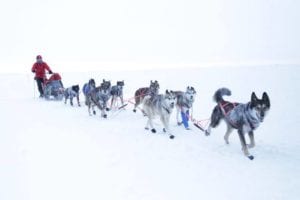
Running sled dog tours during the summer has helped us build a competitive kennel with a tremendous amount of depth. After the summer season is over the new leaders we have built spent much of fall training running up front on the open river bed in front of our house as a kind of “final” exam. Out on the river bed, there is no trail to follow and the wind can often reach 30 or 40mph. Amazingly, our dogs seem to have no trouble.
We love getting to share our passion with guests and inviting them to be with us as we train future champions.
